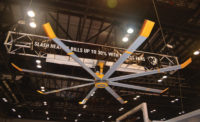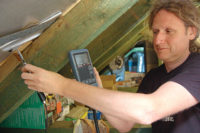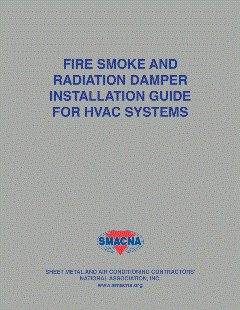Enhanced Ventilation Performance
Fixing Duct Integrity Can Solve Comfort Woes


Some products address specific air-delivery issues that were created at the time of construction, and may now be cost prohibitive to repair.
“In most cases, insufficient airflow is not caused by a lack of air-handler cfm,” said Tom Tjernlund of Tjernlund Fans. “The prime culprit is restrictive pressure drop caused by the duct size, length, and layout.”
In-duct booster fans (like those the company sells) don’t generate additional cfm, he said. They boost the pressure so more airflow reaches areas that need it. (See the feature story “In-Duct Fans Offer Ductwork Fixes” in this issue.)
Internal Duct Repairs
Steve Schmidt, president of Frederick Air Inc., Frederick, Md., provides a number of energy-related services as a Building Performance Institute-certified contractor. In the company’s relatively short 20-year history, duct repair entered the picture 8-10 years ago.
“For the first 10-12 years, on the times we would install duct systems, we did it carefully and thoughtfully,” he said. When he learned about the Aeroseal process, which essentially seals duct leaks from the inside, it made sense to him.
“In my area, we sell on comfort and making sure that all the rooms are comfortable,” Schmidt said. “There’s the energy also, but not predominantly.”
Dave Hutchins of Bay Area Air Conditioning & Heating, Crystal River, Fla., got into duct testing as part of a now-discontinued rebate program. It did, however, educate consumers on the role their duct-work plays in both energy costs and comfort. He said customers can understand the internal sealing process when he compares it loosely to Fix-A-Flat®.
In his climate, “The comfort issue is when you have supply leaks in the attic that pull in hot, humid air,” he said. “That’s the big issue here.” When ducts are sealed, a home’s rh can drop 8-9 percent. “For most people, it’s very noticeable.”
There is a real demand for it, Hutchins said. “Referrals come asking for it, say if a neighbor got it done. We’ve traveled to do children’s and grandchildren’s homes.
“The big key is getting them interested in having it tested for leakage,” he said. “Once they see those numbers, they want it fixed.”
Publication date: 09/26/2011









